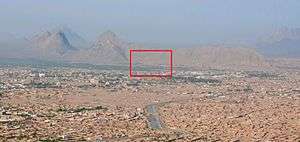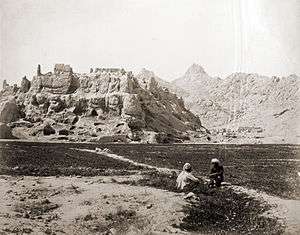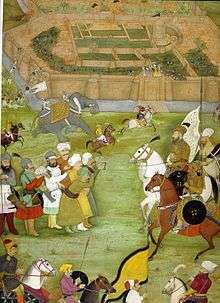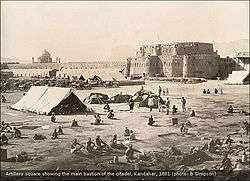Alexandria Arachosia

Alexandria in Arachosia was a city in ancient times that is now called Kandahar in Afghanistan. It was one of the seventy-plus cities founded or renamed by Alexander the Great. Arachosia is the Greek name of an ancient province of the Achaemenid, Seleucid and Parthian empires. The province of Arachosia corresponds to today's southeastern Afghanistan and western Pakistan, the ethnic Pashtun territory.
History
Isidorus of Charax in his 1st century AD "Parthian stations" itinerary described an "Alexandropolis, the metropolis of Arachosia", which he said was still Greek even at such a late time:
"Beyond is Arachosia. And the Parthians call this White India; there are the city of Biyt and the city of Pharsana and the city of Chorochoad and the city of Demetrias; then Alexandropolis, the metropolis of Arachosia; it is Greek, and by it flows the river Arachotus. As far as this place the land is under the rule of the Parthians."— "Parthians stations", 1st century AD. Original text in paragraph 19 of Parthian stations
Remains


The remains of Alexandria in Arachosia are today found in the tell of Old Kandahar citadel in the western portion of the modern city. The citadel tell was excavated by the British Society for South Asian Studies through the 1970s and with the relative improvement in security from 2008–2009.
These excavations indicate that the Islamic walls were based on those from classical times indicating what might be a square (tetragonis) shaped town, but one highly modified by the unusual topography. A triangular shaped portion of the tell adjoining the Greek town is from the Buddhist era.
Alexander appears to have founded his town on the site of 6th century BC Persian garrison point. The pass, river and junction of three long distance trade routes made the location of strategic importance. To date, no Greek buildings have been found, but numerous coins, inscriptions and graves have been. Further discoveries are anticipated as excavation reaches deeper strata of the tell.
The citadel walls have been shown to have contained circular towers similar to those at Farah, Balkh and Nadi Ali Sorkh Gdagh, although these could be Islamic in age.
Gallery
-

Ruins of Alexandria Arachosia (1638)
-

New Kandahar(1881)
See also
_-_Asiae-Tabula_IX.jpg)
External links
- Alexander the Great: his towns
- Arachosia
- Alexandria in Arachosia
- ARACHOSIA, province (satrapy)
- 2012 Encyclopædia Iranica. "KANDAHAR ii. Pre-Islamic Monuments and Remains". Retrieved 6 September 2012.
Coordinates: 31°36′08″N 65°39′32″E / 31.60222°N 65.65889°E


